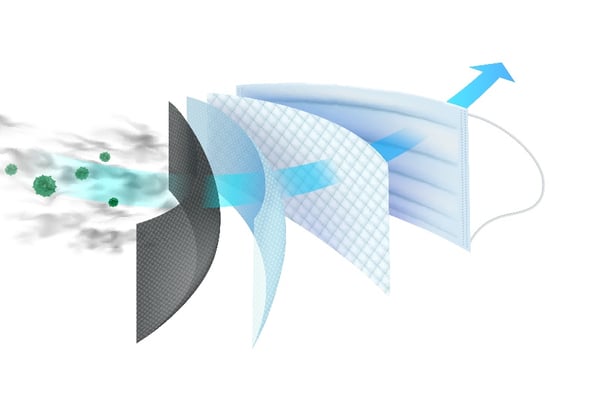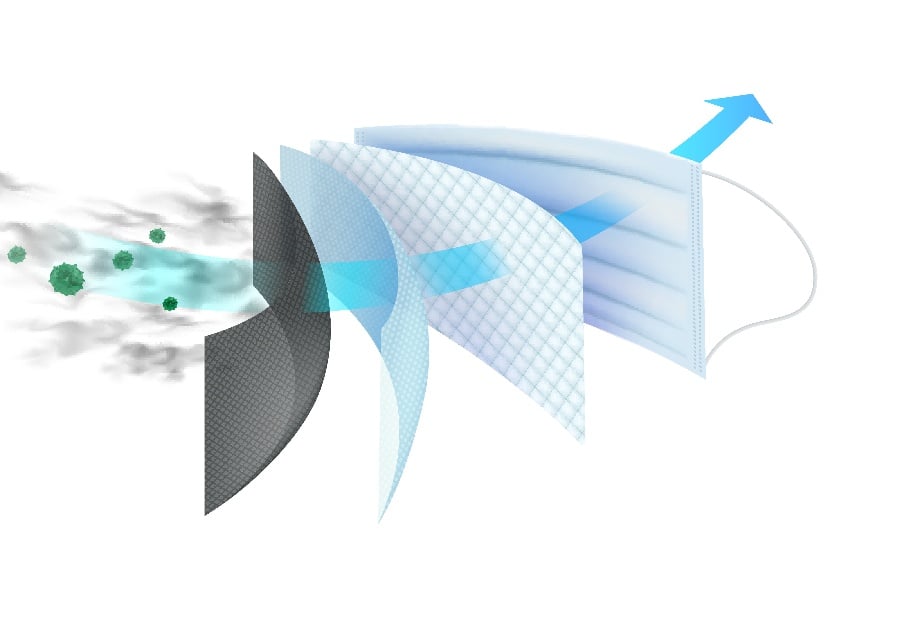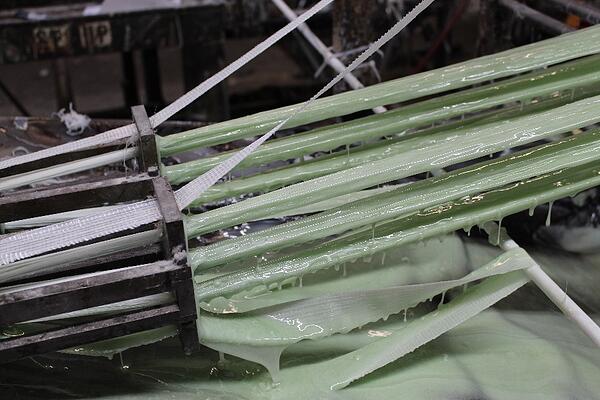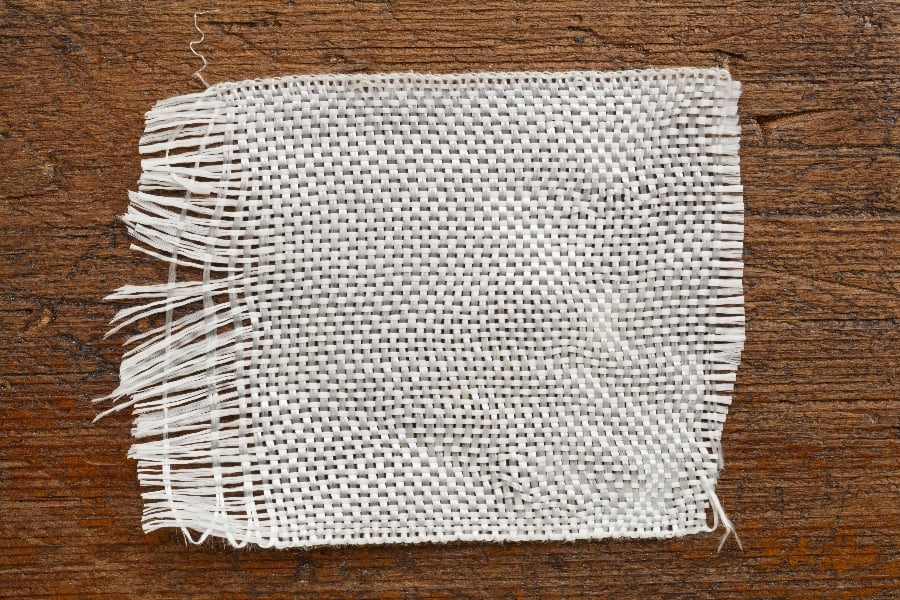
Carbon fiber pultruded products can be used for a variety of applications across numerous industries.
One segment that has been making great strides in the advancement of Fiber Reinforced Polymer (FRP) composites is the medical field.
Due to the recent outbreak of COVID-19, face masks have become essential articles of protective clothing. Without some sort of face mask, entry to businesses is mostly prohibited.
However, the effectiveness of some home-made masks has come under fire recently, which is why the mission to create a carbon fiber mask is high on the priority list.
Building a Better Mask
With the help of Dr. Peter Tsai, the inventor of the N95 mask, production began several months ago to create a carbon fiber mask that can filter out more than 95% of sub-micron particles. Adding a customized electrostatic charging device can prevent viruses like COVID-19 from breaking through the protective filter.
After reaching their goal in the lab, the group set out to produce enough filters for up to 9,000 face masks per hour. This new technology is meant to not only serve essential workers but to also help create new job opportunities across the country for those who may have lost their jobs during the pandemic.
Carbon Fiber vs Fiberglass
Pultruded products can be made out of a wide range of materials. However, the two most popular choices are carbon fiber and fiberglass. While they both yield strong, durable products with thermal and moisture resistance, there are a few key differences between them.
First, carbon fiber and fiberglass are made up of different ingredients. Both carbon fiber and glass fiber rovings have different properties to offer, which we will cover shortly. Both types of rovings can be pulled through polyester or vinyl ester liquid resin and cured the same way.
If you want to trace their origins back to the very beginning, you will find that carbon fiber once began as organic polymers while fiberglass started out as inorganic silica sand.
The organic polymers that eventually make carbon fiber start out as long strings of molecules bound together by atoms of carbon. In order to transform these strings into carbon fiber, the material must first go through a process called polyacrylonitrile. The strings are spun into fibers and stabilized with chemicals. Then, the fibers are carbonized and treated, which results in a much thinner fiber than fiberglass.
On the other hand, the inorganic silica sand used to make fiberglass is collected from soda ash or limestone. Then, it is transformed into a molten state by heating the material up to 2,500 °F. After that, the molten material is then carefully pulled into fine strands that create fibers.
Tensile Strength
Although both types of pultruded products are strong and long-lasting, there is a difference in tensile strength between carbon fiber and fiber glass.
As mentioned, carbon fiber is thinner than fiberglass. This means that it also weighs less. At this point, you might be thinking that this means that carbon fiber is weaker than fiberglass, but it’s not. Carbon fiber has a strength of 4127, and fiberglass has a strength of 3450.
Looking at the number collectively, carbon fiber has a strength-to-weight ratio of 1013, and fiberglass has a strength-to-weight ratio of only 564. What this means is that it takes less carbon fiber material to make pultruded products, and those products are lighter in weight and stronger.
Rigidity
Carbon fiber is also much stiffer than fiberglass, which is why you will see it commonly used in the automotive industry. As an ultra-rigid material, carbon fiber profiles are great for use in vehicles.
However, rigidity is not always a plus. Because carbon fiber is so stiff, that also means that it is not very flexible. Fiberglass, on the other hand, is very flexible. It is also considered to be tougher than carbon fiber since its flexibility allows it to withstand stress and impact much better.
Heat Resistance
While both FRP composite materials are non-conductive and resistant to thermal damage, there is a difference in the way these two materials behave when it comes to thermal expansion.
Carbon fiber will expand as the temperature drops, and fiberglass expands slightly as temperatures go up. Even though the thermal expansion of fiberglass is very small, it is still there. We recommend adding specialty resins to improve the fire-retardancy of any fiberglass pultrusions you may need.
Price Difference
The final difference between carbon fiber and fiberglass is the overall cost. Both are very durable and have long life spans. They require little to no maintenance as well. However, the pultrusion process for creating long carbon fibers is much harder than manufacturing fiberglass. It’s also more time-consuming. The result of this is that carbon fiber is more expensive than fiberglass.
Our Recommendation
If you are looking to use FRP composite products in your next project, we recommend fiberglass profiles. The main reason why we love them so much is that they are more cost-efficient, and they can be reinforced with specialty resins to improve fire resistance and strength.
Here at Tencom, we offer high-temperature vinyl ester resin that can be incorporated into your fiberglass profiles. This specialty resin allows the pultruded products to be able to withstand heat up to 200°C.
If you need something even more fire-resistant, we also offer fire-retardant polyester resin and fire-retardant vinyl ester resin. The polyester specialty resin adds low spread and low smoke capabilities, and the vinyl ester specialty resin adds extra resistance to corrosion at high temperatures.
To improve the fiberglass products' overall strength, we also offer super-high-strength epoxies and polyurethanes. Both specialty resins offer better fatigue resistance. The difference is in the price.
Epoxies have a higher material cost, and polyurethanes have a higher tooling cost. Which one you choose depends on what's more appropriate for your needs and your budget.
Want to learn more about our fiberglass and carbon fiber pultrusions here at Tencom? Get in touch with our experts today.















